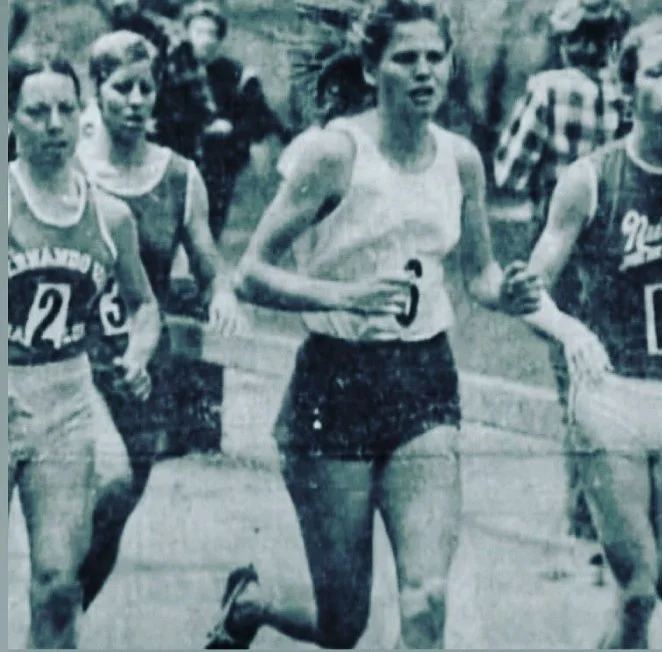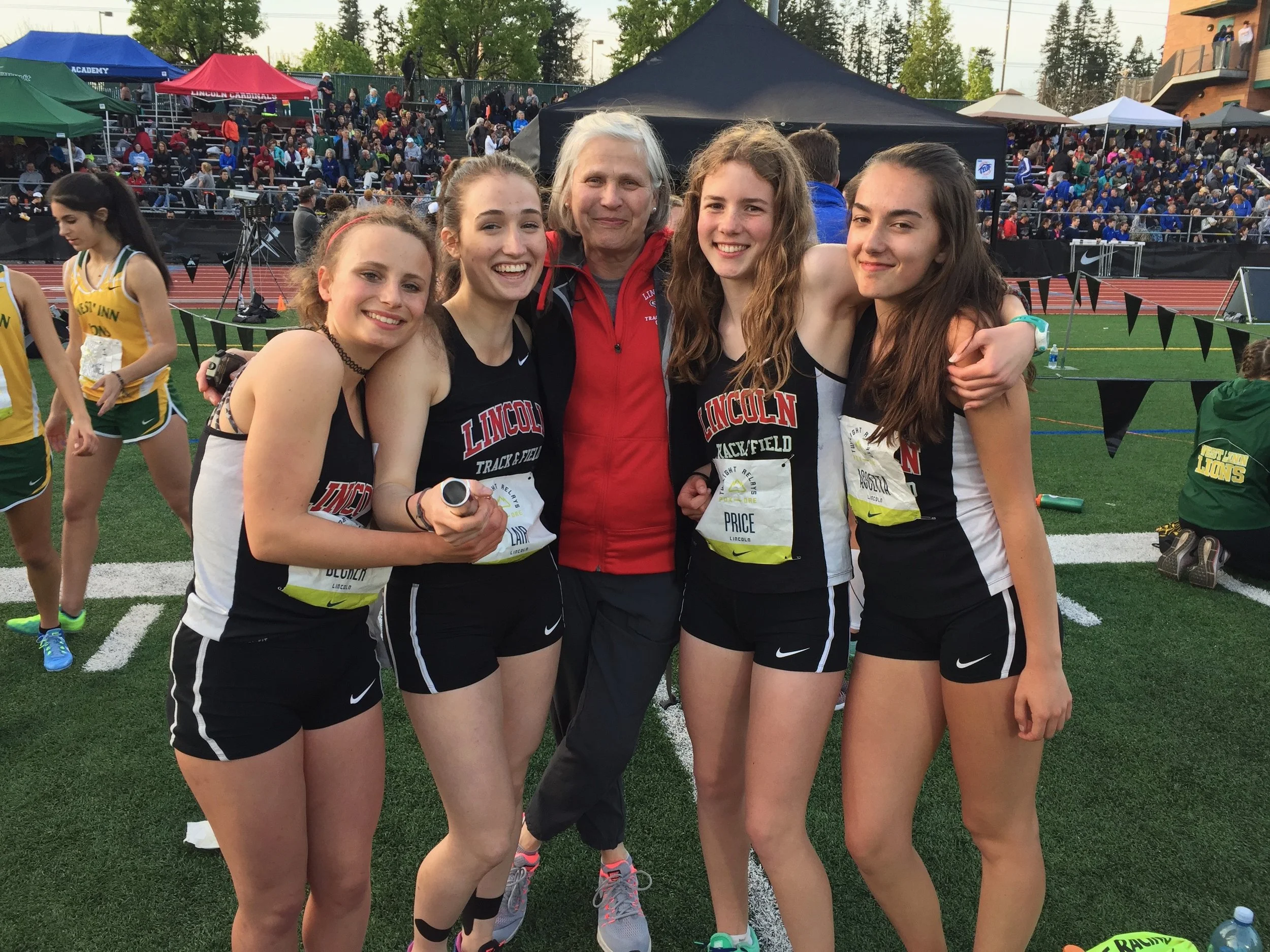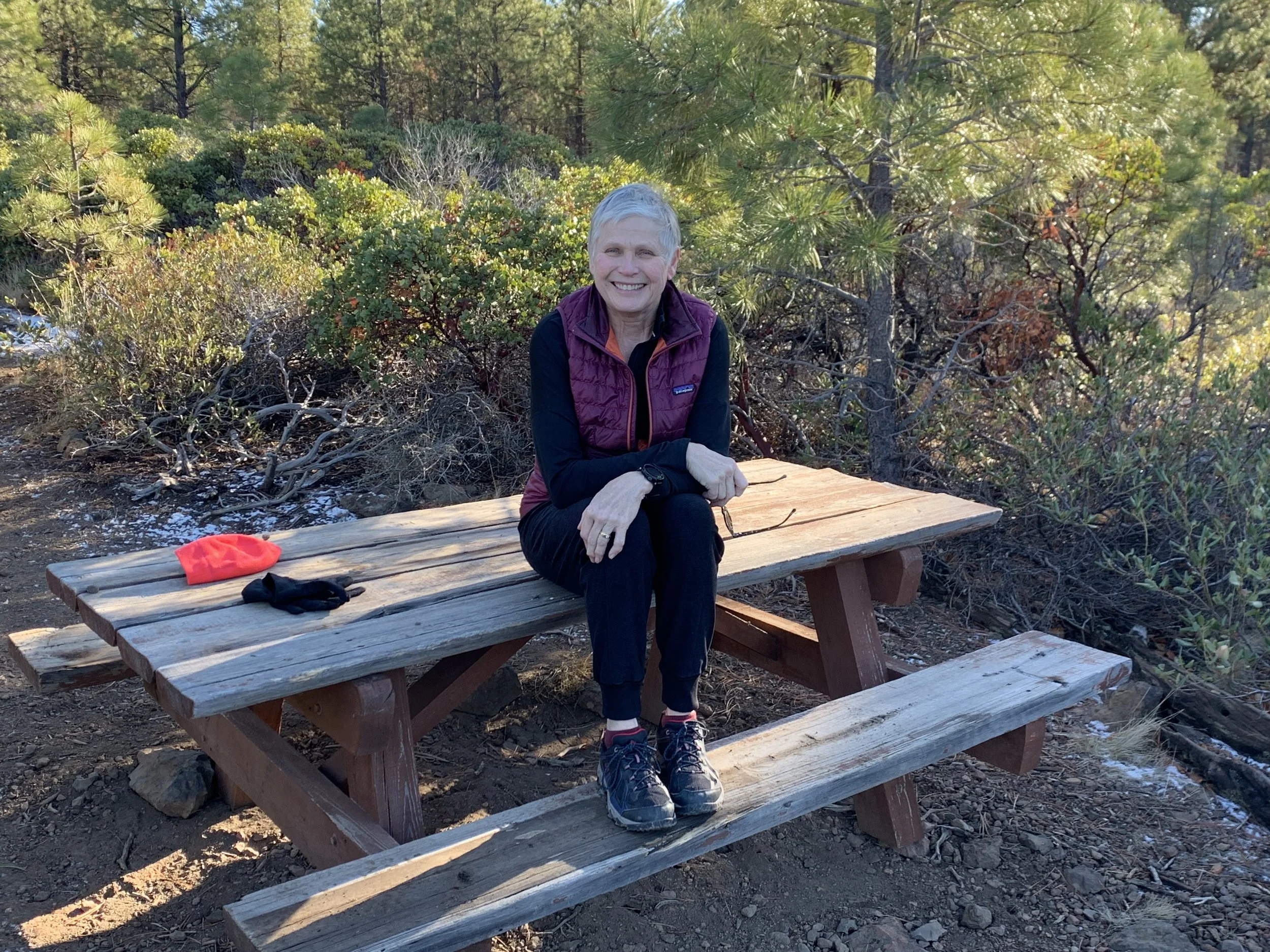Charlotte Lettis Richardson
When she looked around the starting line of the 1975 L’eggs Mini Marathon in Central Park, Charlotte Lettis Richardson could hardly believe what she saw. Around her were more than 300 other women—runners from both coasts, there to get the best out of themselves that day.
Richardson succeeded in that effort; she won in 35:56, surging past previous Starting Line 1928 guest Jacqueline Hansen in the final stretch. For a moment, both considered the possibility of tying, but their competitive spirits prevailed.
Still, there was camaraderie, plus hugs and high-fives, among all the racers. (You can get a feel for it all in Richardson’s 2005 documentary “Run Like a Girl.”) “There was truly a sense of, we have come so far,” Richardson said.
Indeed, Richardson had demanded—and seen—dramatic change in women’s running in just the few years she’d been involved.
In elementary school in Coopertown, New York, Richardson remembers running around the field faster than anyone else, girls or boys. In high school near Boston, on President’s Physical Fitness Day, she excelled at running and the standing broad jump.
But despite a natural talent and boundless energy, she had no opportunities to run cross country or track, or play any other organized sport. “Sports were for boys—and I don't know what there was for girls,” she said.
After high school, she spent a year traveling around Europe before moving back close to the University of Massachusetts. In the summer of 1971, Richardson saw a group of men run past the porch of her rental house. (One of them was Tom Derderian, who became a noted runner, coach, and writer.)
When they returned two hours later, she couldn’t fathom that they’d been running the whole time. They invited her to come along the next day. Intrigued, she did—and stuck with them for two miles, even outkicking them at the end.
Her first race was an intramural one at the university. When she won, she got a trophy with an ashtray on the top. She took it home, lit a cigarette, and started coughing—that was the end of her smoking habit, but the beginning of something much bigger.
Soon, running became more than a sport for Richardson. In it, she found a vehicle for her budding activism, a way to participate in the dramatic cultural shift in gender roles that was occurring at the time. “This was a way for me to show what women could do, and also make the changes that needed to be made for the future,” she said.
The University of Massachusetts lacked a women’s cross country team or track and field, so she asked to join the men’s. She’d sign up for races using her initials, or have Derderian (the two soon started dating) register her.
As she trained with men, she improved dramatically. Still, she often finished last—because any men she’d pass would quit, embarrassed. “They weren't being disrespectful; I think they were just horrified that they were being beaten,” she said.
Most male runners around her were supportive otherwise, but race officials were a different story. In 1972, she attempted to run the men’s cross country championships, in Boston’s Franklin Park. Jock Semple—the same man who attempted to pull Kathrine Switzer off the course of the Boston Marathon in 1967—tried to prevent her from starting, then chased her around the course.
Men who were running encircled and protected her, but eventually, Semple and his staff diverted her from the finish with about 100 meters to go.
She faced other challenges, including spectators who would jeer or question, “Are you really female? You couldn’t possibly be female, and doing this.” In the late 1970s, at a women’s 10,000-meter race in Puerto Rico, competitors had to disrobe in front of doctors to prove their womanhood.
Richardson sums up those experiences in a word: “humiliating.” But she persisted. “I think for me, it kept me going,” she said. “It kept me realizing that this was an important torch to carry.”
In 1972, she and Derderian put an ad for women runners in the University of Massachusetts paper, and started the Sugarloaf Mountain Athletic Club (which remains active today, and now open to both men and women).
About 10 to 15 women—college students, but also mothers and grandmothers—joined, and trained and raced together. They wore shorts custom-sewn by one of the members and white cotton singlets, over no bras or regular bras. If it got cold, they put on pantyhose or tights; on their feet, they wore thin trainers from Nike or Adidas that often left them with blisters.
Over time, equipment improved and Richardson thrived. She eventually excelled at distances from the 800 meters to the marathon, though her strengths were at the 5000 meters and under. In 1974, she was fifth at cross country nationals; in 1976, she qualified for the Olympic Trials in the 1500 meters. The 1975 Mini-Marathon victory remains a life highlight.
In addition to her own competitive career, Richardson has been a dedicated coach for almost 50 years. When she was still in college, she began coaching at Amherst High School; she went on to coach at the collegiate and club levels as well. Last year, she emerged from a brief retirement to begin coaching again at Caldera High School, a new high school in Bend, Oregon.
“My experience as an athlete was so powerful—as a woman, the confidence that it gave me, the sense of, I could do anything that running gave me, really continues to motivate me today,” she said. “Plus, I love the kind of creativity you have as a coach.”
Through her years in coaching, attitudes have changed, with men and women alike being more open to the idea of women leading teams and workouts. Still, there’s room for growth and improvement, including the need for more women as head coaches. In 2018, Richardson co-founded the non-profit Women’s Running Coaches Collective to support other women coaching track, field and distance running.
Men can—and do—effectively coach women, she said. But having a diversity of coaches benefits every athlete, male and female alike. Women “have a very special perspective on the female athlete, and I think we have many skills that we bring to coaching the female athlete as well as the male athlete,” she said.
In addition to clinics, local chapters, discounts, and other partner benefits, the WRCC emphasizes storytelling, with Richardson frequently interviewing other coaches and athletes. It’s work that builds on her background as a filmmaker, simultaneously aiming to preserve the experiences women had in the past while also looking forward.
“I still think there are many things that need to be changed about the sport of running, specifically for young girls and women runners, and then of course, women coaches,” she said. “I think it helps make change for the future, also, if you understand what the past was.”
Note about the author: Cindy Kuzma is a freelance writer, author, and podcaster based in Chicago, and part of the leadership team for Starting Line 1928. She contributes regularly to Runner’s World, Women’s Running, SELF, and more; is co-author of Breakthrough Women's Running: Dream Big and Train Smart and Rebound: Train Your Mind to Bounce Back Stronger from Sports Injuries; and co-host of The Injured Athletes Club podcast.





